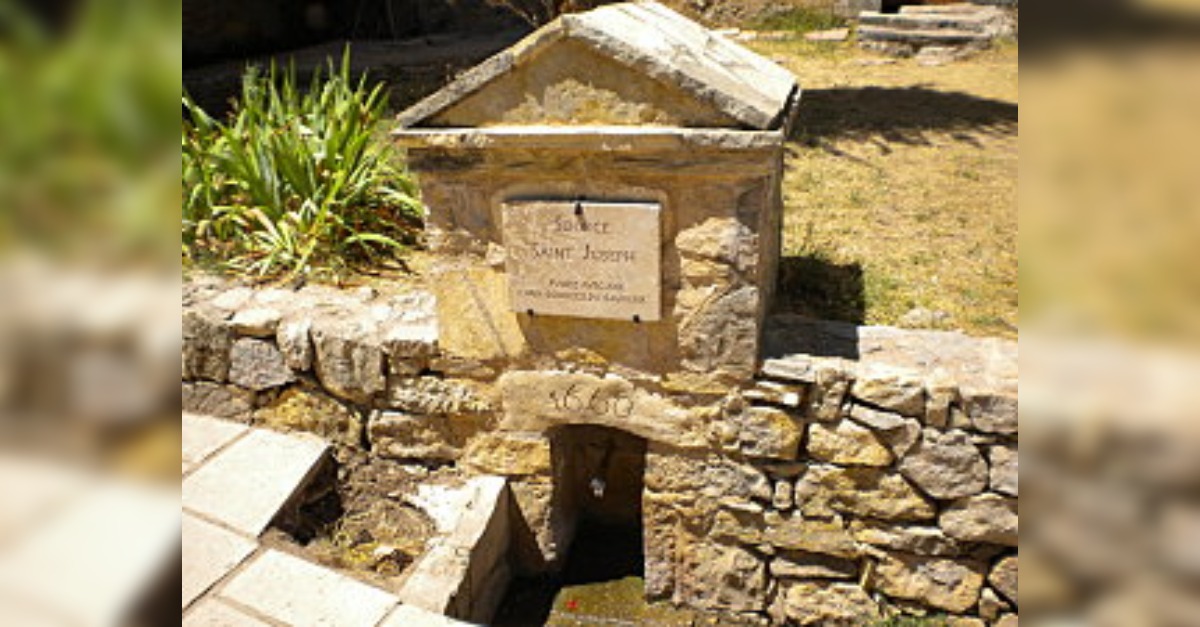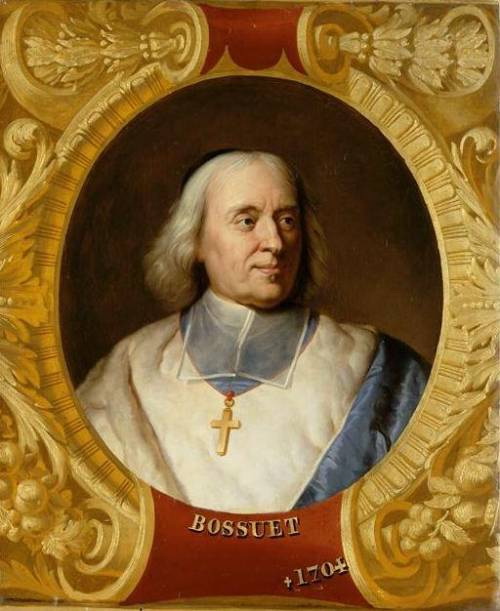
Mount Bessillon belongs to the municipality of Cotignac, in Provence. This is where the June 7, 1660 the only apparition of St. Joseph that is recognized by the Church. It does not resemble other apparitions in which detailed messages are transmitted to a visionary. In fact, there is no message to convey.
The patriarch, alone has come to the aid of a thirsty young shepherd boyon a day very close to summer.
St. Joseph appears as a man of considerable stature who points out a huge rock to the shepherd and says: "I am Joseph, lift it up and you will drink". Gaspard gives him a look of disbelief, as he finds himself unable to lift it. But St. Joseph reiterates his order and the shepherd lifts it without too much effort.
He discovers a spring of fresh water below and drinks greedily, but when he looks up, he realizes he is alone. San JoseJesus' father, has barely broken the silence attributed to him in the Gospels.. Gaspard is the one who does not keep quiet and spreads the news around, so that sick people from all over come to the spring to be cured and relieved. Soon a provisional oratory was built on the site, and in 1663 the present chapel was inaugurated.
The present shrine of St. Joseph was consecrated in 1663. On the feast of St. Joseph, from 1661 onwards, large crowds flocked to the saint's shrine.
Since then, the chapel has withstood all the ravages of time, including those of the French Revolution, even if it had to be abandoned for some years. The chapel was somewhat forgotten during the 19th century and a large part of the 20th century, even if it was abandoned for a few years. every March 19, a pilgrimage would gather the people of the surrounding area to.
Finally, in 1975, the Benedictines of the Medea monastery in Algeria settled there, and the architect Fernand Pouillon built a new monastery next to the remains of the 17th century buildings. The work harmonizes the ancient and the modern.
Around the same time that this singular apparition of St. Joseph took place, France was consecrated to the holy patriarch by Louis XIV, at the request of his mother, Anne of Austria. Those were the times when the French Court stopped to listen to the sacred oratory of Jacques-Bénigne Bossuet, one of the most influential personalities of the Church at that time.
We have sometimes been given a view of Bossuet more akin to that of a treatise writer constructing a political theory of the French monarchy, and his deep spirituality and his great knowledge of Sacred Scripture and the Church Fathers have been forgotten..
Bossuet's word, like that of other palace preachers, was a seed thrown to interlocutors who seemed to have their hearts too much turned towards the demands of power and external prestige. But it is not up to the preacher to reap the fruits; it is God who gathers the harvest in his own time.

Bossuet made to Anne of Austria two panegyrics on St. Joseph, both on March 19, 1659 and 1661. In the first, St. Joseph is presented as the custodian of Mary and Jesus, and at the same time the fact that he knew how to keep all his life the secret that God had entrusted to him is highlighted. In the second, Bossuet starts from the biblical quotation that the Lord has sought a man after his own heart. (1 Sam 13:13). He refers to David, Joseph's ancestor, and the preacher praises the simplicity, detachment and humility of the patriarch. He affirms that his faith surpasses that of Abraham, model of perfect faith, because he had to guard a God who was born and grew in weakness. José resembles the moldable clay to which the potter gives the definitive contours.
When these words were pronounced, Joseph was present in a village in Provence. He did not appear with power and majesty, he did not want to express that he had been too forgotten in 17 centuries of Church history.
On the contrary, St. Joseph's event was marked by discretion and service. He has cared for a young shepherd, as he cared for years for Jesus and Mary.. He has been a father once again. He reminds us that the paternity is always linked to service. This is the fatherhood that instills confidence, that which bases authority on guardianship and service, and not that of the father "lord of lives and property" of the past, which has contributed so much to the current discrediting of the father figure.
However, when the father is questioned or denied, fraternity becomes impossible. This is what happens in today's society, where the seed of individualism has grown. St. Joseph reminds us that the world needs fathers so that we all become brothers.
Antonio R. Rubio Plo, Degree in History and Law. Writer and international analyst @blogculturayfe / @arubioplo